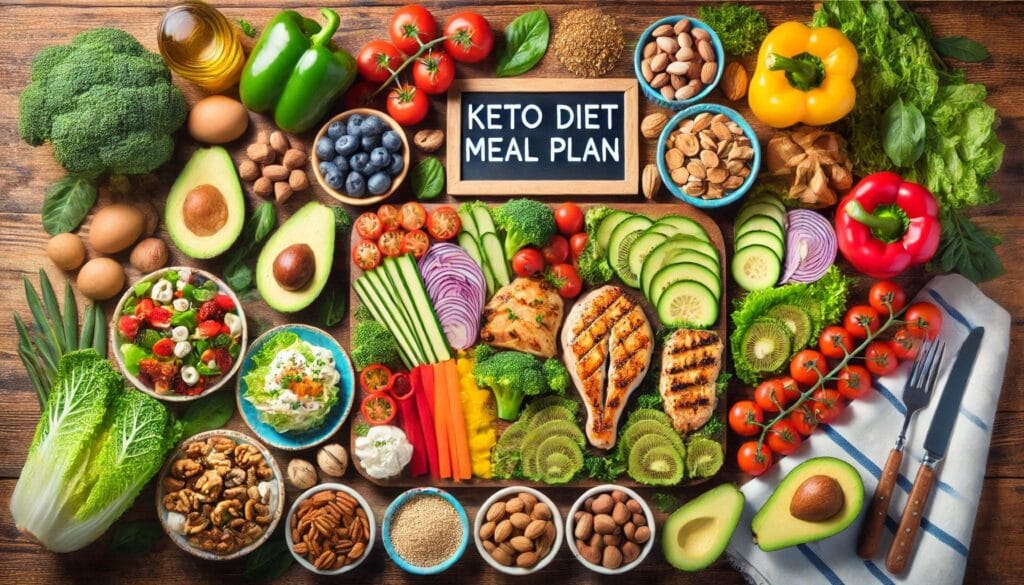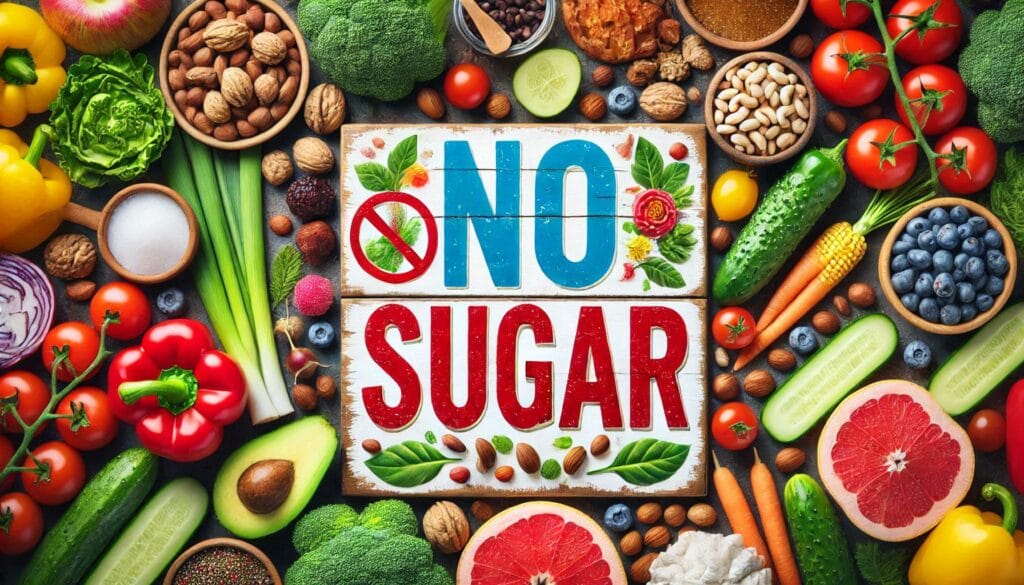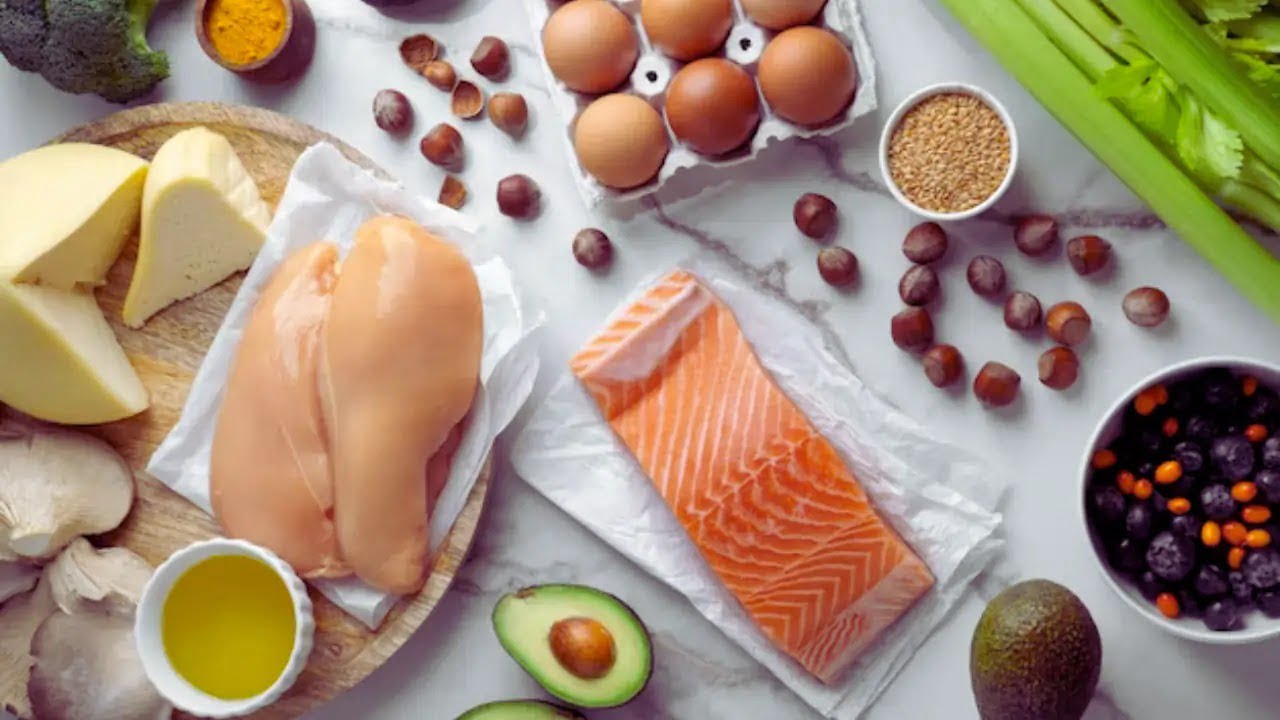
Are you curious about the Keto diet but don’t know where to start? Look no further, because in this ultimate beginner’s guide, we’ll cover everything you need to know about the Keto diet. Whether you’re aiming to shed some pounds, boost your energy, or improve your overall health, the Keto diet might be the right fit for you. Let’s dive in and demystify the world of Keto!
What Is The Keto Diet?
Ketosis and its role: Ketosis occurs when your body lacks sufficient carbohydrates to burn for energy. As a result, it starts breaking down fat into ketones, which become your main energy source. This process can help you lose weight and improve your overall well-being.
Benefits of the Keto Diet
Weight Loss
On the Keto diet, your body becomes a fat-burning machine. By restricting your carbohydrate intake, you encourage your body to tap into its fat stores for energy. This can lead to rapid and sustainable weight loss.
Improved Mental Clarity
Many Keto enthusiasts report enhanced mental clarity and focus. When your brain uses ketones for energy, you may experience reduced brain fog and improved cognitive function.
Enhanced Energy Levels
Switching to a Keto diet can provide you with steady, sustained energy. You’ll no longer experience the energy crashes that often accompany carb-heavy meals.
Getting Started with Keto
Setting clear goals: Before diving into the Keto world, it’s essential to set clear goals. Whether it’s weight loss, better health, or improved energy, having a defined purpose will keep you motivated.
Preparing your kitchen: A well-stocked Keto kitchen is crucial. Remove tempting high-carb foods, and fill your pantry and fridge with Keto-friendly options.
What to Eat on the Keto Diet?
Healthy Fats
Avocado, olive oil, and nuts are your best friends on the Keto diet. Healthy fats should make up the majority of your daily calorie intake.
Low-Carb Vegetables
Non-starchy vegetables like spinach, broccoli, and cauliflower are rich in nutrients and low in carbs, making them perfect for Keto.
High-Quality Proteins
Include lean meats, fish, and poultry in your diet. These are excellent sources of protein without the added carbs.
Dairy and Alternatives
Dairy products like cheese and Greek yogurt can be part of your Keto diet, but be mindful of their carb content. Alternatively, opt for dairy-free alternatives like almond milk.
Foods to Avoid on Keto

Starchy Vegetables: Potatoes, corn, and carrots are high in carbs and should be limited to the Keto diet.
Processed Foods: Highly processed foods often contain hidden sugars and unhealthy fats. Stick to whole, unprocessed options.
Creating a Keto Meal Plan
Start your day with a Keto-friendly omelet or a smoothie made with low-carb fruits and greens.
Lunch and Dinner Options
Enjoy salads with protein, grilled chicken with vegetables, or a delicious salmon fillet for your main meals.
Snacks and Desserts
Satisfy your cravings with Keto snacks like nuts, seeds, or dark chocolate. You can even indulge in Keto desserts like sugar-free cheesecake.
Keto-Friendly Recipes
Try out delicious recipes like
- cauliflower crust pizza
- zucchini noodles with pesto
- Almond flour pancakes
The Importance of Hydration
Drinking Water and Electrolytes: Staying hydrated is key to Keto success. Make sure you drink enough water and replenish your electrolytes, especially in the initial stages.
Common Keto Mistakes
Avoiding Pitfalls: We’ll discuss common mistakes like not monitoring your carb intake, neglecting your fiber intake, or relying on processed Keto products.
Overcoming Keto Challenges
Dealing with Keto Flu
Keto flu symptoms can be tough, but they’re temporary. Stay hydrated, consume enough electrolytes, and rest when needed to overcome this phase.
Social Situations
Navigating social gatherings while on Keto can be challenging, but with some preparation and communication, you can stick to your plan.
Tracking Your Progress
Measuring Success: Learn how to track your Keto journey through methods like monitoring your weight, taking body measurements, and keeping a food diary.
Exercise and Keto

Finding the Right Balance: Discover how to incorporate exercise into your Keto lifestyle. Exercise can enhance your results and overall well-being.
Keto for Different Lifestyles
Keto for Vegetarians
If you’re a vegetarian, you can still follow the Keto diet by focusing on plant-based fats, proteins, and low-carb veggies.
Keto for Athletes
Even athletes can benefit from Keto. We’ll explore how to adapt your diet to support your active lifestyle.
Long-Term Sustainability
Making Keto a Lifestyle: The Keto diet can be a long-term choice. We’ll discuss how to make it sustainable and enjoyable for the years to come.
How do I avoid carbs when eating out?
Avoiding carbs while eating out can be simple with a few strategies:
- Plan Ahead: Check the restaurant’s menu online and identify low-carb options before you go.
- Eliminate the Starch: Request to substitute starchy sides like bread, pasta, or rice with extra vegetables or a salad.
- Add Healthy Fats: Ask for extra butter or olive oil to add to your meal if it seems low in fat.
- Sauces and Condiments: Be cautious with sauces and dressings as they may contain hidden sugars and carbs. Opt for those that are mostly fat, like Béarnaise sauce, and ask for them on the side.
- Choose Drinks Carefully: Stick to water, unsweetened tea, or other low-carb beverages to avoid hidden sugars.
- Rethink Dessert: Consider skipping dessert or choosing a cheese plate or berries with cream if available.
- Get Creative: Don’t hesitate to ask for customizations to make a dish low-carb-friendly.
FAQs
1. Is the Keto diet safe for everyone?
The Keto diet is generally safe for most people, but it’s essential to consult with a healthcare professional before starting, especially if you have underlying health conditions.
2. How quickly can I expect to see results on the Keto diet?
The timeline for seeing results on the Keto diet can vary greatly from person to person, as it depends on several factors such as starting weight, body composition, level of physical activity, age, metabolism, and adherence to the diet. However, there’s a general expectation based on common experiences:
- Week 1: Initial weight loss can range from 1 to 10 pounds. This is often water weight due to the reduction of glycogen stores.
- Weeks 2-3: As your body becomes a fat-burning machine, you may continue to see weight loss, but at a potentially slower rate as your body adjusts.
- Week 4-5: By now, you might notice a more consistent pattern of fat loss.
- 6 Weeks and Beyond Weight loss may stabilize, and you could start seeing gradual changes in body composition as you continue with the Keto diet.
On average, after the initial water weight loss, you can expect to lose about 1-2 pounds per week. It’s important to remember that weight loss is not linear and can fluctuate. Consistency and patience are key, and it’s also crucial to focus on the overall health benefits of the diet, not just the weight loss.
3. How do you follow keto when eating out?
Following a keto diet while dining out can be quite manageable with a bit of planning and smart choices. Here are some tips to help you stay on track:
- Plan Ahead: Before you go out, check the restaurant’s menu online and decide what you can eat. Look for keto-friendly options in advance.
- Choose the Right Restaurant: Opt for places that offer a variety of protein and vegetable options. Steakhouses, seafood spots, and even some Indian restaurants can be good choices.
- Simple Dishes: Stick to dishes that include protein, non-starchy vegetables, and healthy fats. Grilled or baked meats and fish are great options.
- Sauce on the Side: Many sauces and dressings are high in sugar and carbs. Ask for them on the side so you can control the amount you use.
- Skip the Starch: Request substitutions for starchy sides like bread, rice, or pasta. Ask for extra vegetables or a salad instead.
- Watch Your Drinks: Avoid sugary drinks and opt for water, unsweetened tea, or other low-carb beverages.
- Add Healthy Fats: If your meal seems low in fat, ask for extra butter or olive oil to add to your vegetables or meat.
Remember, the key is to avoid foods high in carbs and sugars and to not be afraid to ask for customizations to fit your dietary needs. Enjoy your meal while sticking to your keto goals!



 Afrikaans
Afrikaans Albanian
Albanian Amharic
Amharic Arabic
Arabic Armenian
Armenian Azerbaijani
Azerbaijani Basque
Basque Belarusian
Belarusian Bengali
Bengali Bosnian
Bosnian Bulgarian
Bulgarian Catalan
Catalan Cebuano
Cebuano Chichewa
Chichewa Chinese (Simplified)
Chinese (Simplified) Chinese (Traditional)
Chinese (Traditional) Corsican
Corsican Croatian
Croatian Czech
Czech Danish
Danish Dutch
Dutch English
English Esperanto
Esperanto Estonian
Estonian Filipino
Filipino Finnish
Finnish French
French Frisian
Frisian Galician
Galician Georgian
Georgian German
German Greek
Greek Gujarati
Gujarati Haitian Creole
Haitian Creole Hausa
Hausa Hawaiian
Hawaiian Hebrew
Hebrew Hindi
Hindi Hmong
Hmong Hungarian
Hungarian Icelandic
Icelandic Igbo
Igbo Indonesian
Indonesian Irish
Irish Italian
Italian Japanese
Japanese Javanese
Javanese Kannada
Kannada Kazakh
Kazakh Khmer
Khmer Korean
Korean Kurdish (Kurmanji)
Kurdish (Kurmanji) Kyrgyz
Kyrgyz Lao
Lao Latin
Latin Latvian
Latvian Lithuanian
Lithuanian Luxembourgish
Luxembourgish Macedonian
Macedonian Malagasy
Malagasy Malay
Malay Malayalam
Malayalam Maltese
Maltese Maori
Maori Marathi
Marathi Mongolian
Mongolian Myanmar (Burmese)
Myanmar (Burmese) Nepali
Nepali Norwegian
Norwegian Pashto
Pashto Persian
Persian Polish
Polish Portuguese
Portuguese Punjabi
Punjabi Romanian
Romanian Russian
Russian Samoan
Samoan Scottish Gaelic
Scottish Gaelic Serbian
Serbian Sesotho
Sesotho Shona
Shona Sindhi
Sindhi Sinhala
Sinhala Slovak
Slovak Slovenian
Slovenian Somali
Somali Spanish
Spanish Sundanese
Sundanese Swahili
Swahili Swedish
Swedish Tajik
Tajik Tamil
Tamil Telugu
Telugu Thai
Thai Turkish
Turkish Ukrainian
Ukrainian Urdu
Urdu Uzbek
Uzbek Vietnamese
Vietnamese Welsh
Welsh Xhosa
Xhosa Yiddish
Yiddish Yoruba
Yoruba Zulu
Zulu